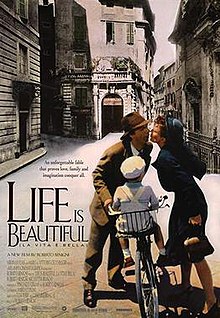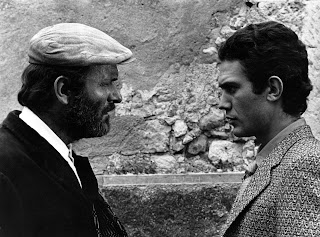Influential writer was fourth Italian to be awarded Nobel Prize in Literature
 |
| Eugenio Montale became a Nobel Prize winner in 1975 |
Montale's most famous work is often considered to be his first, a collection of poems he published in 1925 under the title Ossi di seppia - Cuttlefish Bones. These poems established his use of stark imagery, his introspective tone and his fascination with themes such as desolation, alienation and mortality, and the search for elusive meaning in a fragmented world.
Later collections such as Le occasioni (1939) - The Occasions - and La bufera e altro (1956) - The Storm and Other Things - reinforced his reputation as one of Italian literature’s 20th century greats.
Montale was born in 1896 in a building overlooking the botanical gardens of the University of Genoa, a short distance from the city’s Piazza Principe railway station. His father, Domenico, was the co-owner of a chemical products company.
As a young man, Montale was dogged by ill health but obtained a qualification in accountancy and for eight years had ambitions to be an opera singer under the tuition of the baritone, Ernesto Sivori. He never performed in public and after Sivori died in 1923 he did not pursue his studies, focussing more and more on literature, taking it upon himself to learn about Dante, Petrarch, Boccaccio and D'Annunzio in particular.
 |
| Eugenio Montale's first volume of poetry established him as a great literary talent |
Politically, he opposed Fascism to the extent of signing Benedetto Croce’s Manifesto of Anti-Fascist Intellectuals, yet after the fall of Mussolini he rejected both the Christian Democrats and the Italian Communists and, apart from a brief membership of the centre-left Partito d'Azione, steered clear of any involvement in politics.
He began publishing poetry in the 1920s, initially influenced by the works of poets such as Ezra Pound and TS Eliot, but also drawing on the inspiration he took from family holidays on the rugged Ligurian coast around the Cinque Terre and Rapallo. Montale often uses imagery drawn from the sea and the Mediterranean landscape to convey feelings of isolation and the fragility of existence.
In 1927, he moved to Florence, where he worked as a journalist and literary critic and mixed in the city's intellectual and artistic circles, attending literary gatherings of the café Le Giubbe Rosse, meeting Carlo Emilio Gadda, Tommaso Landolfi and Elio Vittorini among others. He worked as an editor for the publisher Bemporad and later became the director of the Gabinetto Vieusseux Library, although he lost that position in 1938 because of his anti-Fascist views.
From 1948 until his death, Montale lived in Milan. He became literary editor of the Corriere della Sera, dealing in particular with the Teatro alla Scala, and music critic for the Corriere d'informazione.
 |
| Montale was buried alongside his wife, Drusilla, at cemetery outside Florence |
In 1962, in Montereggi, near Fiesole, he had married Drusilla Tanzi, with whom he had been living since 1939. Sadly, after a fall that left her with a fractured femur, she died in October 1964 at the age of 77. He would reflect poignantly on her death in his 1966 collection, Xenia, written in a more personal style.
In failing health, Montale himself died in Milan’s San Pio X clinic in 1981 a month before his 85th birthday. A state funeral was held in Milan Cathedral and he was buried in the cemetery next to the church of San Felice a Ema, a suburb on the southern outskirts of Florence, next to his wife Drusilla.
His archive is preserved at the University of Pavia, with which Montale had a long association and where his daughter, Bianca, was a professor.
-panorama_novembre_2019.jpg) |
| The pretty fishing village of Boccadesse is only a short distance from the historic centre of Genoa |
The port city of Genoa (Genova), where Eugenio Montale was born, is the capital of the Liguria region. It has a rich blend of mediaeval history, Renaissance architecture, and a vibrant modern culture. Its strategic location has made it a centre of trade and commerce for centuries, with considerable wealth built on its shipyards and steelworks, but also boasts many fine buildings, many of which have been restored to their original splendour. The Doge's Palace, the 16th century Royal Palace and the Romanesque-Renaissance style San Lorenzo Cathedral are just three examples. The area around the restored harbour area offers a maze of fascinating alleys and squares, enhanced recently by the work of Genoa architect Renzo Piano, and a landmark aquarium, the largest in Italy, which showcases a diverse array of marine life, from sharks and dolphins to jellyfish and seahorses. The picturesque fishing village of Boccadasse, just outside the historic centre, boasts pastel-coloured houses, a charming harbour, and authentic seafood restaurants.
 |
| Manarola, where houses cling to rugged cliffs, is one of the five villages of the Cinque Terre |
The Cinque Terre, where Montale spent family holidays as a child, is a breathtaking part of the Italian Riviera renowned for its picturesque villages perched on cliffs overlooking the Mediterranean. A UNESCO World Heritage Site, it is made up of five villages - Riomaggiore, known for its narrow alleys, charming shops, and stunning views; Manarola, which has a picturesque harbour and colourful houses clinging to the cliff; Vernazza, which has mediaeval castle and a sandy beach; Corniglia, which can be reached only by a steep staircase or a shuttle bus but offers stunning views of the surrounding coastline; and Monterosso al Mare, the largest of the five, which has a sandy beach and a historic centre. The Cinque Terre National Park offers a network of hiking trails that connect the five villages, while boat tours offer the chance to explore the coastline from a different perspective. The Cinque Terre is known for Sciacchetrà, a sweet dessert wine made from dried grapes.
Also on this day:
1492: The birth of Lorenzo di Piero de’ Medici, Duke of Urbino
1937: The birth of actress Daniela Rocca
1943: Nazis paratroopers free Mussolini from imprisonment at mountain ski resort




.jpeg)




























